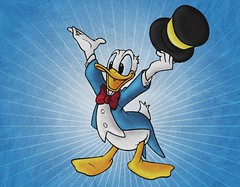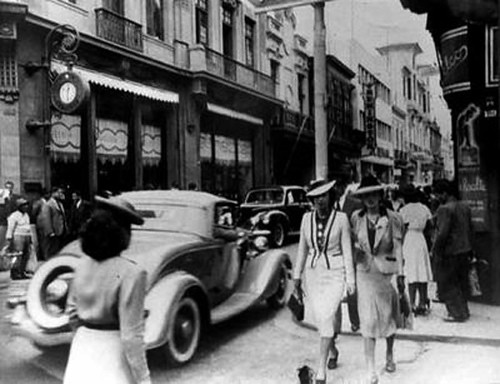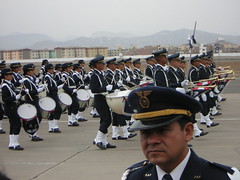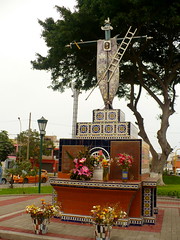It was the largest city that had existed in South America and remained that way even when it lay in ruins during part of the Spanish colonial period. At 18km2 by some measurements and more than 20km2 including its surrounding agricultural districts, this gigantic city formed the capital of the Chimor kingdom of the Chimú civilisation.
Category: "Travel and Places"
The Chimú and the Kingdom of Chimor
In the aftermath of the collapse of the the Moche civilisation in the late 700s A.D. a new civilisation was born. In the late 800s until the early 1000s the Chimú culture began to establish itself, reaching it’s peak in the 1200s and lasting until the 1490s when they were conquered by the Incas.
Huanchaco and the Caballitos de Totora
Huanchaco is a friendly beach town popular during the summer months with the people of Trujillo and known as a excellent surf spot. It is also a popular spot to eat ceviche.
Museo Arqueológico Cassinelli
What do you do if you own a successful gas station on the road out of town? Build your own collection of ancient artefacts, of course! For over 40 years Señor José Cassinelli (sometimes incorrectly written as Casinelli) has been buying ceramics and other items from the illicit black market of huaqueros or tomb robbers.
Moche: Huaca del Sol y Huaca de la Luna
In the heart of their world, the Moche constructed two truncated pyramids, the gigantic pyramid of the Sun (sol) and the smaller pyramid of the Moon (luna). These pyramids, and the city that spanned between them functioned as their capital.
The Huaca del Sol is by far the largest of the two and is one of two pyramids in Peru thought to possibly be the largest adobe mud-brick construction in the Americas.
The Moche
The Moche (or Mochica) were a civilisation who occupied the northern Peruvian coast between modern-day Lambayeque and Virú and influenced an area that ranged from Huarmey to Piura in the north. They were a collection of peoples with a similar culture and had no central political authority on a grand scale, i.e. they never formed an empire. Primarily farmers and fishers they built irrigation systems to create fertile areas in the desert and created rafts known as the Caballitos de Totora to fish from. But by far their most important legacy was one of art.
Sopa Teóloga
Theologic Soup is the name for a soup created in the 1600s by Dominican monks in Northern Peru, particularly Trujillo. It is made of white bread, potato, tomato, sliced cheese and milk. It can have chicken or turkey meat, sometimes both. The seasoning is the blending of garlic, leek, celery, oregan, pepper, salt, oregan, white onion, laurel and yellow chilli pepper.
Colonial Trujillo
Trujillo is the capital of the region of La Libertad on the northern coast, and is the third largest city in Peru after Lima and Arequipa. This is where the Moche and Chimú civilizations developed between 200B.C. and 700A.D. Its year-round pleasant climate has earned it the title of “Capital of the Eternal Spring”. It has wonderful beaches, including the famous Huanchaco, which are sometimes venues for international surfing competitions. Fishermen still use reed canoes called “Caballitos de Tortora”, made the same way for thousands of years.
Caral – The “Oldest” Civilisation in the Americas
In ancient times, as the peoples of the Nile valley in Egypt and the peoples of the Indus valley in India came together to form cooperative societies, so too did the people of the Supe valley in Peru. In groups of family units of small scale farmers and fishers they began to form systems of government, religion and trade.
Argentina: Buenos Aires
My long awaited and expensive application for residency has been well on it’s way for a while now. When you do receive it, you are asked to leave the country to collect it, making it easier on the immigration system. This way they see a tourist leave and a resident enter – rather than them having to put a function on the system to change the status.
Argentina is a land with a currency at the same value as the Peruvian Nuevo Sol, which means its relatively cheap. The only problem for us was finding the money and waiting for a good offer on a flight. After more than a month waiting to travel it finally happened.
Chosica
The building of the central andean railway heralded the birth of the town of Chosica – Lima’s residents favourite place to avoid winter days and breathe some fresh air.
Emilio Agustín del Solar y Mendiburu was a public prosecutor for the Supreme Court, a council member for the Province of Lima and a top lawyer for the company that ran the new railway. It was when he was inflicted with a debilitating illness that he decided to leave Lima’s damp humid environment and move to an area along the Rimac river known as Chosica Vieja.
Tondero Piurano
The prolonged wait for spring to arrive in Lima has had me thinking of Piura, a sun-drenched paradise rich in creole culture.
The video below is of the famous Tondero dance of Piura.










